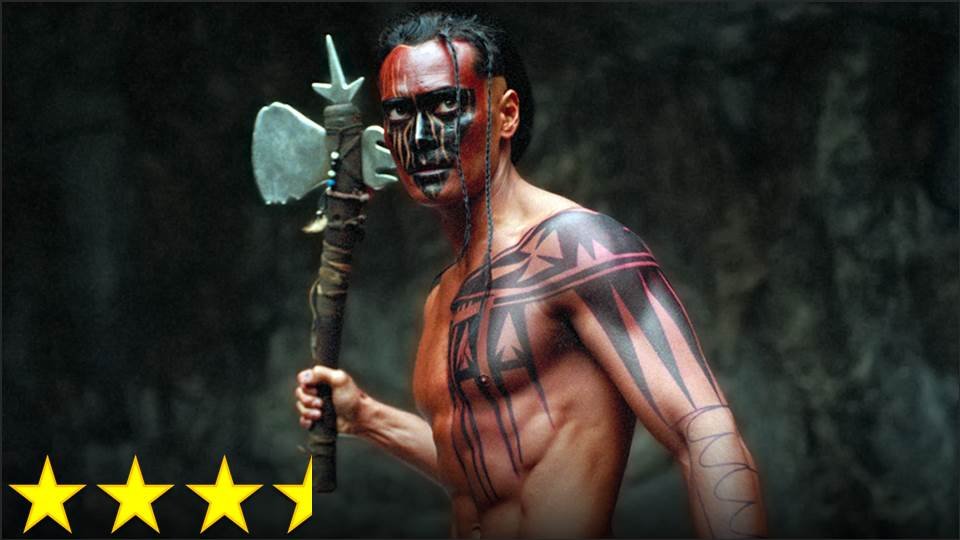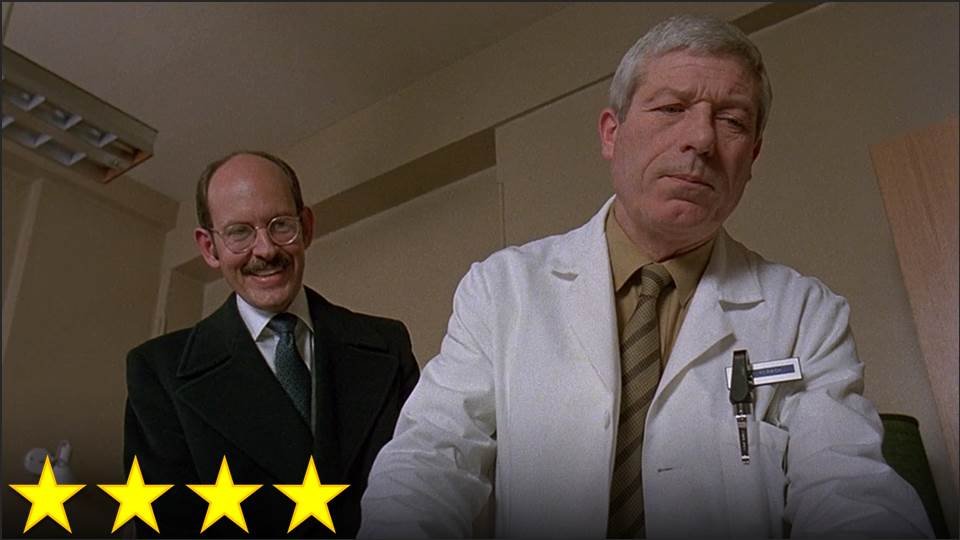It’s always difficult for me to write anything about films which have already received immense praise from countless better writers than I, so I’ll be brief: this film is practically perfect. I love it to death. One significant thing about it is that, while it is clearly a Hollywood entertainment film, it unusually has no clear place in the genre system. It’s kind of a detective drama, kind of a psychological drama/thriller, kind of a horror film, and kind of a comedy. Maybe it’s all of them, and if it is, that’s a tough balance to achieve. While this may not be my favorite Jodie Foster performance, Hopkins makes up for this in spades, and his character clearly shaped many later works of media which I love. It’s not quite in my top 20 favorite films – maybe it’s just not a very “J. D. Hansel” kind of movie – but I approve of its status as one of the best films of all time without any reservations.
Horror
Brotherhood of the Wolf Review
Alternate Title: Le Pacte des loups
I feel the need to highlight this French film that isn’t very well-known in the States, even though it should be. It’s an entertainment film, much like what one would expect from Hollywood, but there’s a key difference. In the middle of its fights scenes and romance, there’s a running theme of the significance of the Age of Reason. Consequently, it’s a skeptic’s alternative to Sleepy Hollow – a neat Halloween movie that does a better job of celebrating critical thinking. While it is rather slow, it’s also dramatic, creepy, and clever. Try it on for size one night when you’re in the mood for some chills.
Little Shop of Horrors (1960) Review
Not a lot of people remember that this film was, for a while, a legend in Hollywood. Countless directors told the tale of “The Movie Made in Two Days.” The story goes that one filmmaker noticed that a set would be available on a studio lot for two days longer than it was needed, so he asked to have the set to shoot his own film on those two days. He then wrote the script for a relatively short feature film, put together a cast, rehearsed it with them, and then shot all of the footage in just those two days. One has to wonder, then, how does one make a feature in so short a time-span?
Easy: don’t worry about quality. The film doesn’t mind at all that it’s stupid and ridiculous – in fact, it loves its own stupidity. This was, after all, marketed as a comedy, which is only sensible since the idea of a low-budget horror movie about a talking plant is laughable. I think because it appreciates its own “campiness,” I’m inclined to appreciate it as well. The fact that it doesn’t take itself too seriously makes for a movie that’s loads of fun, and that even has a few moments here and there that I wish could have been in its sacred remake (for example, I love the clever use of the cartoon drawing for the credits).
It may be stupid, but it’s also smart, and that’s why it’s more than deserving of its status as a cult classic.
An American Werewolf in London Review
My appreciation of great horror films is always a little bit limited by the fact that I don’t really care for being scared all that much. There is still some horror out there that I like, but this film doesn’t have that much of it – most of this film’s horror portions are simply slow builds to jump-scares. Sometimes fun builds, but the point is still the “startle,” which isn’t my kind of horror. This film does, however, offer my kind of humor.
Most of the movie is really a sort of bizarre ’80s comedy about a college kid and his buddy having a strange experience abroad, and the character comedy is absolutely delightful. John Landis knows how to make the minor characters funny as well; the casting of Frank Oz here is perfect, and sometimes finding the right character actor is all it takes for great comedy. I think that’s what I like so much about this film: Landis brings together different elements that don’t usually get put together, but his careful combination creates a rare and beautiful emotional effect on the viewer – an effect of uneasy laughter. It’s simply a work of really smart craftsmanship, and while not all of it is the kind of entertainment I’m used to, this film is already inching its way closer and closer to my heart.
Escape from New York Review
I’ve heard it said that nearly every movie about a future urban dystopia steals its style from Blade Runner. While I can certainly see the resemblance between the aesthetic of Blade Runner and that of many later films about the future, it’s worth noting that many ’80s movies were portraying cities with the same darkness, theatricality, vivid color, and nods to film noir cinematography as Blade Runner. What’s interesting is how using a theatrical and colorful style in both visuals and characters was very common in horror films in the 1970s, but then somehow moved into the mainstream in the 1980s, seemingly without reason. It makes sense for a horror film to have a mixture of darkness and theatricality, but why did this become a part of the styles of all ’80s movies?
I think the answer is Escape from New York, which I see as a more or less direct predecessor to Blade Runner. Released in 1981, this movie shows horror director John Carpenter bringing the stylistic elements of horror – including the visual style, the acting style, and the writing style – to both the dystopian sci-fi genre and the action genre. I suspect that this film took part in making over-the-top lighting more mainstream, but as much as I appreciate this, I think what’s particularly impressive about this film is how it brings much cleverness to the action genre. Most action movies are just looking for an excuse to fire a gun or set off a bomb, but this movie is interested in creating situations that make the viewer really want to see the action hero – or anti-hero – take action. There’s a wonderful scene with a street that everyone tries to avoid driving down at night because lines of people on either side of the road wait for unsuspecting cars, line up, and smash the car as it goes along their little conveyor-belt of doom. There’s technically no reason for this to be considered a “horror” scene since there’s nothing supernatural about it and there’s arguably no suggestion of insanity (merely desperation), but it’s certainly the kind of scene that only a horror filmmaker would write.
Of course, there are other aspects of the writing that are more conventional for the genre – a rescue mission, a countdown, etc. – but even these are done in a way that somehow creates more intensity than most action films. This makes Escape from New York a thrilling, chilling, and exciting film that’s sure to make the viewer rethink film genres altogether.
Dracula (1931) Review
This is a fun one, folks. Scary? On occasion, but it’s mostly just bizarre. It’s just strange watching one of the first sound horror films because it’s difficult to tell how I’m supposed to react to each scene – I don’t know what’s supposed to be chilling, what’s supposed to be funny, and what’s supposed to be somewhere in between. I think most of the film is meant to be in the middle – it knows not to take itself too seriously seeing as how it is about Count Dracula, after all. If it were remade today, it would have to either be completely changed into an entirely different (and probably greatly inferior) thriller, or it would have to be a comedy, because too much of it is just plain silly.
The film’s plot is a little hard to follow at times, and by the end of it I’m left with more questions than answers. How does his hypnotism work? Shouldn’t his life be a breeze if he can just hypnotize people into doing whatever he wants? How does he always manage to stay away from mirrors? Does he ask how many mirrors there are in any location he plans to enter before his arrival? And since when can vampires turn into wolves? Most importantly, how is turning into a bat helpful when you’re pulling a carriage?
But hey, I had a good time – at least when I followed along and when I wasn’t bored – so who am I to complain? Besides, who doesn’t love Bela Lugosi? THAT is a fun performance to watch. The smartest move on the part of the filmmakers was making the movie short, and most other horror films from the time followed suit, making them very easy watches that can easily be squeezed into the schedule of even the busiest movie buff. This leaves me very interested in watching more of the classic Universal Monster films, if only because the visual style helped establish Hollywood Expressionism, so naturally I find it visually enthralling.





